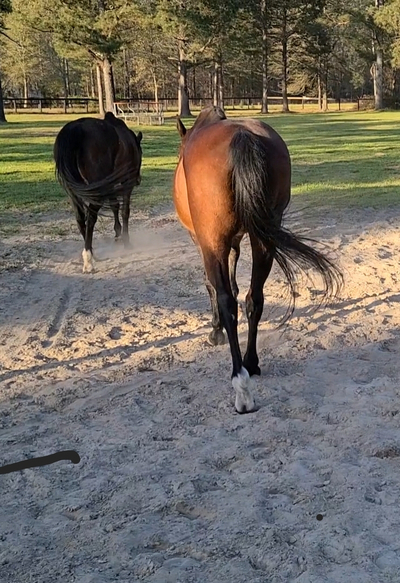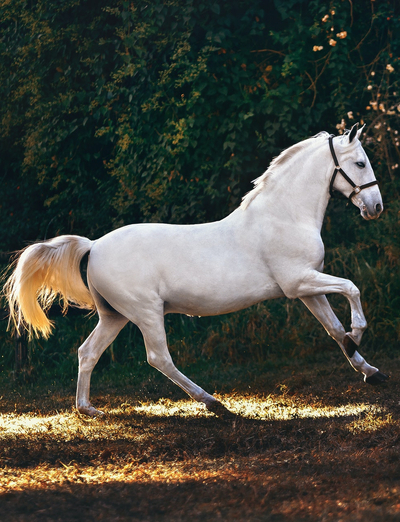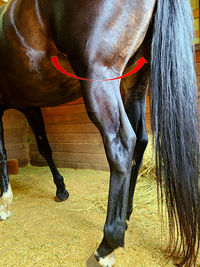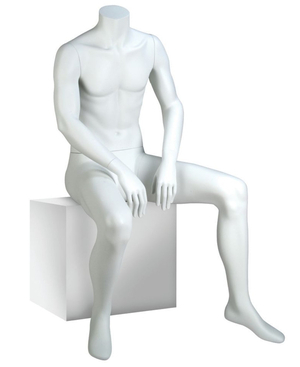When a horse bends, the spine also rotates such that the withers tip slightly in one direction or the other. In walk for example, there is bending both to the left and the right throughout the stride. Normally, the spine bends right as the body moves over the right front leg, and it bends left as the body moves over the left front. During ridden lateral movements the healthy balanced coordination occurs when the spine is not tipping toward the outside of the bend. A shoulder-in or half pass left should not be tipping the rider to the right. It is clear evidence that some fundamentals are mission. Even when riding on a straight line, the rider should not be tipped to one side. Here is an article that illustrates this: Horse Spinal Rotation and Rider Asymmetry
Most horses have some imbalance naturally. For athletic longevity and best performance, we want to help the horse to move in balance. There are many possible reasons for the degrees of natural imbalance ranging from anatomical; both normal imbalance and anatomical variation, to habitual movemet patterns or Central Pattern Generators's (CPG's). Regardless of the reason, the first training objective should be to create the best balance possible.
Inverted Spinal Rotation
When the horse bends left and the withers tip right, this is referred to as inverted rotation or counter-rotation. The healthy rotation is in the direction of the bend and for practical purposes looks and feels perfectly vertical. From this body coordination, the horse can easily execute transitions from one gaits to another or to a halt, and from bend in one direction or the other. When a horse is using inverted rotation of the spine, transitions an be "sticky". The horse feels like s/he resists the request. In reality, s/he can not easily execute the request, resulting in hesitation or refusal. Often we see a rider frustrated by the resistance and insisting more strongly that the horse execute. When the horse repetitively agrees to execute from a less than efficient coordination, CPG's are created for movement in an unhealthy body coordination. This will lead to under-performance and lameness.
How to Fix the Horse's Inverted Spinal Rotation
The attention is primarily on the back and secondarily on the limb placement. Typically, when a horse is carrying the trunk in a higher posture, rotation decreases. Working dressage gymnastics with the trunk lifted will allow balanced muscular development and this can be a good start to creating healthy CPG's. It is a small change in the skeletal geometry that has a greater effect at the extremities, so limb movement patterns also have the opportunity to improve. This is intense balance work done at very slow speeds because speed will hide imabalances, and we need to see them and fix them. It is harder to move very slowly in balance, but it is also very low impact and safe for horses cleared by their vets to come back into work after an injury.
The rider's influence on the horse's back is limited. With a neutral balance seat, the rider can resist inverted rotation, making it less desirable to the horse, and match the horse in correct rotation making that a more comfortable coordination for the horse. This will be paired with the rider suggesting gymnastics that can induce correct rotation either through passive rotation of the spine created by pelvic rotations associated with hind limbs, or through creating a high degree of trunk lift. It is important to note that this work is done with near zero tension in the reins. It is primarily the rider's body influencing horse's body, absolutely not through shifting weight from one seat bone to the other as that is disruptive to the horse's back coordination. To facilitate the horse's learning, the improvements in the coordination are used immediately in gymnastics to demonstrate to the horse that the gymnastic is easier in the improved body coordination. Requirements and solutions arise through collaboration between horse and rider. And the key is that the rider's attention be laser focused on the horse's body coordination.
- Details
-
Created: Sunday, 03 February 2019 17:15
-
Last Updated: Sunday, 25 July 2021 13:47
Central pattern generators (CPG's) are neural circuits that automatically produce repetitive motion like heartbeat, breathing, and locomotion. For soundness in horses, we are concerned with locomotor CPG’s; the one’s that govern patterns of motion like the walk, trot, and canter gaits. The unfortunate saying “running around like a chicken with no head,” reflects reality. In experiments, decerebrate (without cerebrum) animals and humans have demonstrated normal basic locomotion. Automatic repetitive functions still work even with a large portion of the brain removed or damaged.
Read more: Training Horse CPG's for Healthy Locomotion





